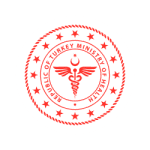PROCEDURE DESCRIPTION
Hair transplantation is the process of properly preparing the grafts (hair follicles) taken from the scalp at the back of the head and transplanting them to the area in need.
The aim of this procedure is to improve the current situation by transplanting to balding or thinning areas.
It is usually not possible to achieve a completely balding image with a lush hair structure. The result depends on the thickness, shape, color, amount of hair loss and hair density in the donor area as well as the success of the surgical method.
A 2nd or 3rd session operation may be required to achieve the best result.
Eyebrow transplantation is the process of transplanting single root grafts taken from the hair on the nape of the neck to the area where the eyebrows are sparse. This technique is also valid for mustache and beard transplantation. After eyebrow transplantation, there may be bruising and swelling in the area and eyelids, but this condition passes within 3-4 days. The transplanted eyebrows may grow over time, so they may need to be shortened periodically.
Hair transplantation is performed under local anesthesia. Sedation anesthesia may be used as an adjunct in some cases. Patients who need sedation should fast for at least 4-5 hours before surgery.
Although allergies or drug reactions due to local anesthesia are rare, susceptible people cannot be identified in advance with routine tests. The hair transplant operation should be performed in a hospital or surgical medical center so that treatment can be applied if necessary for these conditions. However, such undesirable situations can be successfully treated thanks to the precautions taken in advance and are extremely unlikely to harm the patient.
The hair transplant operation may take 4-12 hours depending on the amount of grafts to be transplanted and the hair opening. On average, it is completed between 6-8 hours.
AFTER THE PROCESS
The postoperative head dressing is removed after 1-2 days.
Although wound healing problems in the nape of the neck are rare, they are extremely unlikely due to the well-blooded scalp and if they occur, they heal easily.
The healing process of the wounds is between 4-10 days. Swelling in the forehead area may continue from day 3 to day 5.
During the process of hair growth (between weeks 10 and 20), some pimples may occur on the skin.
To minimize problems, you should regularly use antibiotics, painkillers and other medications recommended by the doctor after the operation and apply headbands.
Transplanted hair starts to fall out from the 2-3rd week and this process may continue until the 8th week. This is expected and natural. Even in rare cases, there may be a temporary loss of hair just around the transplanted area. This is a completely temporary situation.
The transplanted hair usually starts to grow from the 3rd month and it may take up to 12 months to grow completely. By the end of the sixth month, 70-80% results are obtained. The final results occur in a process lasting 18-24 months.
There is a possibility of a slight scar in the nape area where the hair follicles are taken, depending on the number of grafts taken and the skin structure of the person.
Some of the transplanted hair may not hold, but the hair transplantation rate in the clinic is 95% and is considered quite successful according to world standards.
Personal care is important for the first 10 days after hair transplantation and it is recommended to be in a clean environment during this period. During this period, crusting may occur in the area where the hair follicles are taken and in the transplantation area, and edema and swelling may occur to varying degrees in the face and eyes.
If you experience any problems with the procedure, consulting your doctor will help you find the best solution.
Hair loss is a lifelong process, so it may be recommended to delay hair loss and support existing hair with various treatments after the operation. If existing hair loss continues and a denser hair is desired, thickening operations may be considered.













